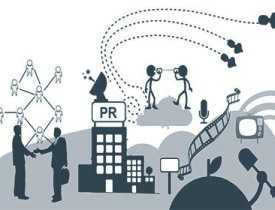Description
Course Name: Diploma in Public Relation Officer
Course Id: DPRO/Q1001.
Education Qualification: 12th Pass.
Duration: 370 Hrs.
How You will Get Diploma Certificate:
Step 1- Select your Course for Certification.
Step 2- Click on Enroll Now.
Step 3- Proceed to Enroll Now.
Step 4- Fill Your Billing Details and Proceed to Pay.
Step 5- You Will be Redirected to Payment Gateway, Pay Course and Exam Fee by Following Options.
Card(Debit/Credit), Wallet, Paytm, Net banking, UPI and Google pay.
Step 6- After Payment You will receive Study Material on your email id.
Step 7- After Completion of Course Study give Online Examination.
Step 8- After Online Examination you will get Diploma Certificate soft copy(Scan Copy) and Hard Copy(Original With Seal and Sign).
Step 9- After Certification you will receive Prospect Job Opportunities as per your Interest Area.
Online Examination Detail:
- Duration- 120 minutes.
- No. of Questions- 60. (Multiple Choice Questions).
- 10 Questions from each module, each carry 10 marks.
- Maximum Marks- 600, Passing Marks- 40%.
- There is no negative marking in this module.
| How Students will be Graded: | ||
| S.No. | Marks | Grade |
| 1 | 91-100 | O (Outstanding) |
| 2 | 81-90 | A (Excellent) |
| 3 | 71-80 | A (Very Good) |
| 4 | 61-70 | B (Good) |
| 5 | 51-60 | C (Average) |
| 6 | 41-50 | P (Pass) |
| 7 | 0-40 | F (Fail) |
Benefits of Certification:
- Government Authorized Assessment Agency Certification.
- Certificate Valid for Lifetime.
- Lifetime Verification of Certificate.
- Free Job Assistance as per your Interest Area.
Syllabus
Diploma in Public Relation Officer
Introduction to Public Relations
Every individual or entity operating in the public eye faces the spread of information about them or their practices to the public. While public relations are an industry unto itself, any attempt to portray oneself in a certain way to others can be considered a form of public relations. Public relations (PR) refer to managing how others see and feel about a person, brand, or company. PR for corporations, notably publicly traded companies focuses on maintaining a positive corporate image while handling media requests and shareholder inquiries.
Code of Ethics in Public Relations
Objectives, Define ethics and explain its need in society;, Relate the impact of Public Relations profession of society, Ethics defined, impact of public relations society, ~o’le of Public Relations : Information, Role of Public Relations : Persuasion, In Defense of Public Relations , relation between ethics and professionalism, code of ethics and code of conduct for public relations, Declaration of Principles, Code of Athens, Adoption of the Code of Ethics in India, Relating organizational goals to public interest, legal and ethical consideration in public relations, Some legal aspects for a corporation.
Effects of Good Public Realtion Strategies
Define and understand the perception of PR, Define corporate social responsibility, Explore the growth of the PR industry in the United States and globally, Review roles, functions, and career options, Review career options in the field of PR, The Image of Public Relations in Popular Culture, Defining Public Relations: What’s in a Name? A Crowd-Sourced Definition from the Public Relations Society of America, Public Relations Scholars Weigh In, Public Relations versus Advertising: Understanding the Difference, Evolution of Corporate Philanthropy into Corporate Social Responsibility.
Public Relation and Brand Building
Aim and research question, Methodology and sources, Structure of the thesis, Limitations, Definitions, building strong brands, Brand concept, Brand identity, Brand personality, Measuring Brand Personality, Why use Brand Personality? Brand image, Brand equity, Brand awareness, Perceived quality, Brand loyalty, Brand associations, the fall of advertising and the rise of pr, Advertising, Public relations, Social media, Credibility, Maintaining the brand, Evaluating advertising, The power of a third party, Brand-building through PR, Disadvantages of PR, Measuring PR results, Building brands with PR, Global markets, Advertising’s role in the company, The importance of PR in the future.
PR Campaign – Analysis and Implementation
Defining Components of the Public Relations Plans and Rules for Writing Them, Goals and Primary Focus, Objectives, Strategies and Tactics, Timeline, Budget and Evaluation, Presentation of Public Relations Plans, Material Requirements, Assignments and Grading Policy, Public Relations Campaign Planning & Management, Situation Analysis, Problem, Challenge or Opportunity Statement, Assignment, Verbal or written, Problem, Challenge, Opportunity Statement, Primary Focus (Audience), Objective, Strategy, Activity, Evaluation, Timeline, Budget.
Public Relations – Tools
Defining PR, the PR process, problem statement formation, & why research is important; Preparing to meet the client, Defining Public Relations (History/Evolution of the Profession), Top 10 Foundational Principles of Public Relations, How would you define public relations? What are the four public relations models? What model is practiced today? Who is Edward Bernays, and how is he significant to the public relations profession? What is spin, and why is it counterproductive to long-term public relations goals? What is the difference between “reactive” and “proactive” PR? And which is more effective? What are “stakeholders,” and why are they important in public relations?

